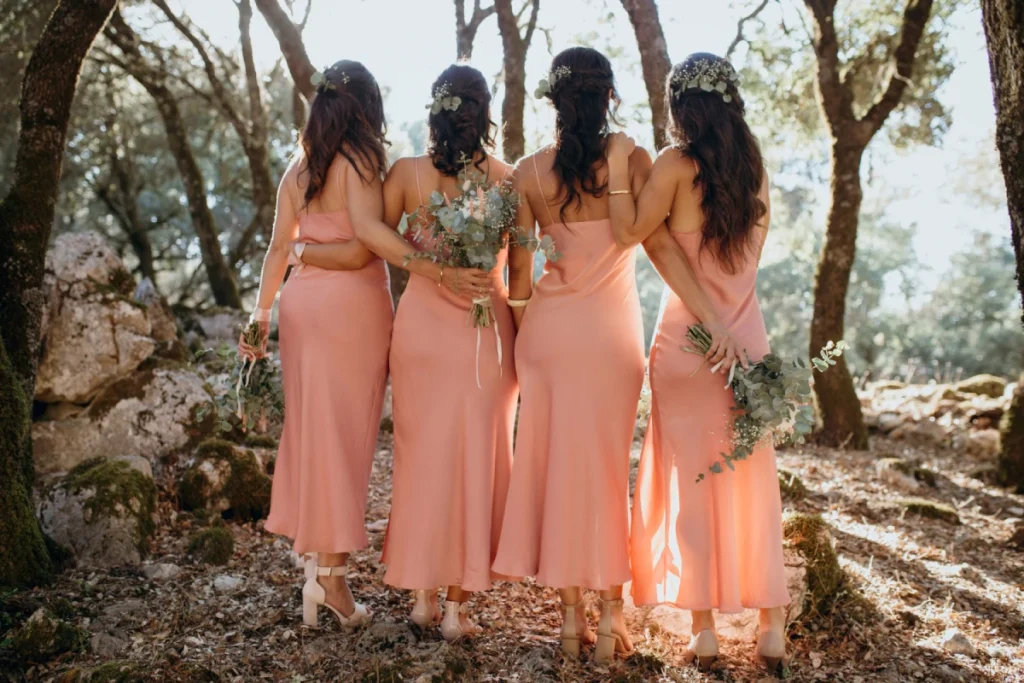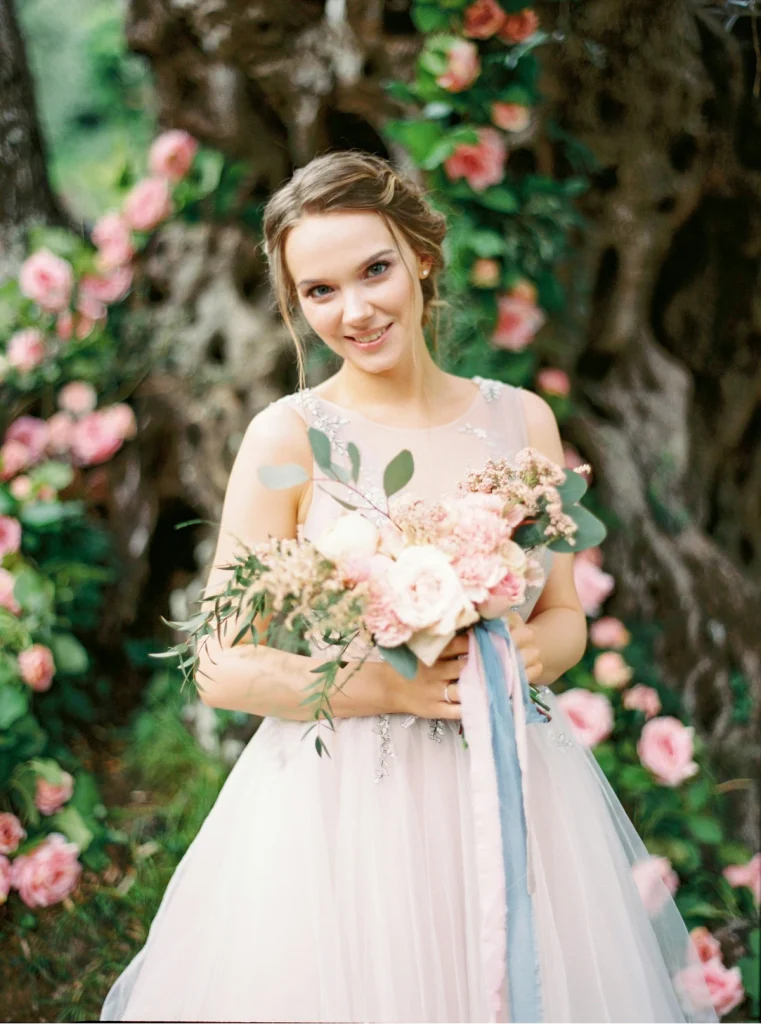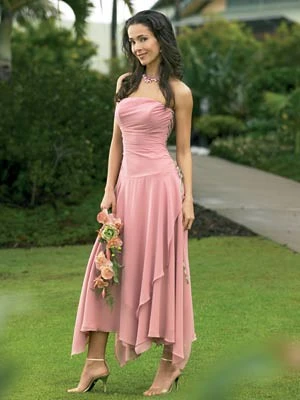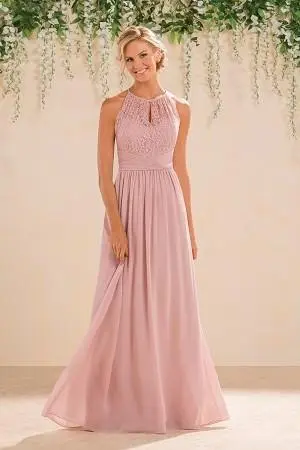Choosing the perfect bridesmaid dress for your wedding party involves more than just picking out a color or style that suits everyone. The material of the dress plays a significant role in determining the overall look, feel, and comfort of the outfit. In this guide, we’ll cut into the world of bridesmaid dress fabrics, exploring the different materials available and their unique characteristics.
Crepe is a versatile fabric known for its distinctive crinkled texture. While traditionally made from silk, modern crepe can be woven from a variety of synthetic fibers, including cotton, wool, and synthetic materials like polyester and elastane. The variable fiber content gives crepe a broad range of properties, making it suitable for a variety of styles. It’s particularly noted for its lightweight, breathable nature and fluid drape, making it a fantastic choice for bridesmaid dresses.
Crepe is known for its crumpled texture and wrinkled appearance. This textured look gives the fabric an added dimension, lending an elegant touch to any dress.
Polyester crepe, commonly used in the fashion industry, is comfortable to wear and wrinkle-resistant, making it ideal for long wedding ceremonies and receptions.
A dress made from crepe drapes beautifully, making it great for both fitted and flowy bridesmaid dress styles.
Tulle is a sheer, net-like fabric that’s often associated with ballet tutus and bridal veils. However, it’s not limited to these uses. It’s available in various colors and is easy to dye, enhancing its versatility. Tulle’s excellent drape makes it ideal for skirts, sleeves, and hems, contributing to an ethereal and elegant aesthetic for wedding gowns.
Tulle is a mesh fabric, giving it a unique net-like structure. This structure allows for a comfortable stretch when elastane is added to the fabric.
Tulle’s versatility makes it suitable for a range of uses, from overlays and undergarments to decorative elements and even stand-alone pieces.
The beautiful draping of tulle lends itself to a dreamy, romantic aesthetic, making it an excellent choice for bridesmaid dresses.
Satin dresses are a timeless fabric choice associated with elegance and luxury. Despite the common misconception, satin refers to the weave of the fabric, not the material itself. Satin-weaved fabrics are known for their beautiful drape, lustrous sheen finish, and wrinkle-resistant properties, making them perfect for bridal gowns and glamorous occasions like weddings.
Satin is praised for its beautiful drape, which can flatter a variety of body shapes.
Satin is a versatile fabric that can be used in various styles of bridesmaid dresses, from sleek and fitted designs to more voluminous styles.
Charmeuse is a lightweight fabric known for its glossy exterior and matte interior. Often made of silk or synthetic alternatives, charmeuse has a soft drape, making it popular for flowing styles, typically cut on the bias. Its lightweight nature makes it suitable for year-round wear, and it can be especially sexy for spring and summer weddings as opposed to winter weddings.
Charmeuse has a glossy finish on the outside and a matte finish on the inside, giving it a luxurious feel.
The soft drape of charmeuse makes it suitable for flowing dress styles, enhancing the elegance of any bridesmaid dress.
Charmeuse is lightweight and comfortable to wear, making it a great choice for long wedding events.
Chiffon dresses offer a sheer, lightweight fabric often used as an overlay or in layers. Woven from silk or rayon, chiffon has an ethereal and floaty feel, making it an excellent choice for a bohemian-themed wedding. Its light and airy structure make it perfect for silhouettes and goddess-like styles.
Chiffon is a sheer and transparent fabric, often used in layers or as an accent detail to add a touch of elegance.
Chiffon has a floaty, ethereal feel, adding a romantic touch to any bridesmaid dress.
Due to its light and airy structure, chiffon lends itself to diaphanous silhouettes, making it a popular choice for boho brides.









